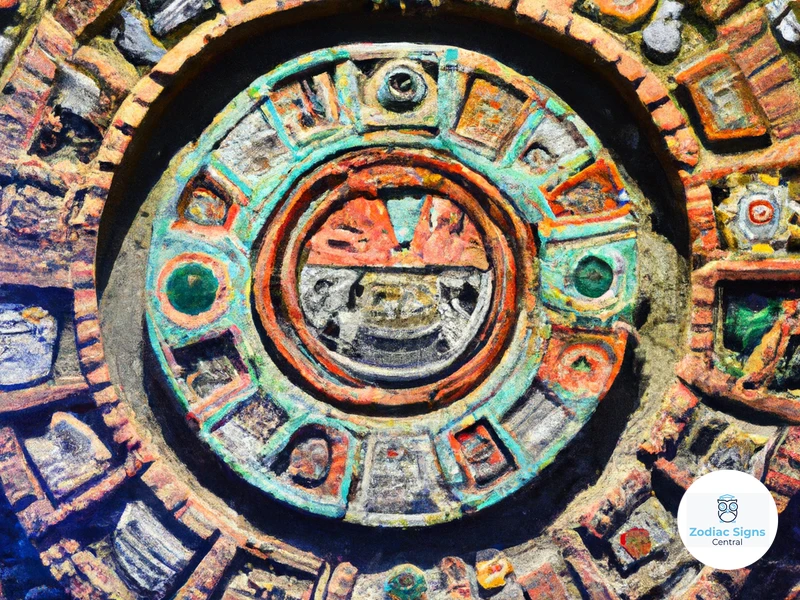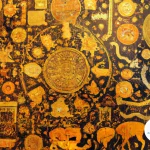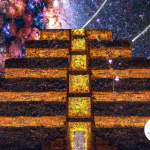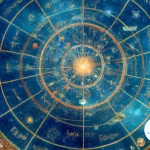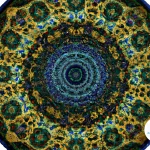The ancient Mayan civilization has long fascinated historians and researchers with its advanced knowledge and unique practices. Among these intriguing aspects is Mayan astrology, a complex system that unveils the secrets of the cosmos through intricate calculations and symbolism. From the Mayan Zodiac to the Long Count Calendar, the astrologers of this civilization had a deep understanding of celestial movements and their impact on human lives. In this article, we will delve into the world of Mayan astrology, exploring its historical background, cultural significance, decoding of horoscopes, and its influence in the modern world. Join us on a journey of discovery as we unlock the mysteries that the Mayan astrologers held within their ancient traditions.
The Mayan Civilization
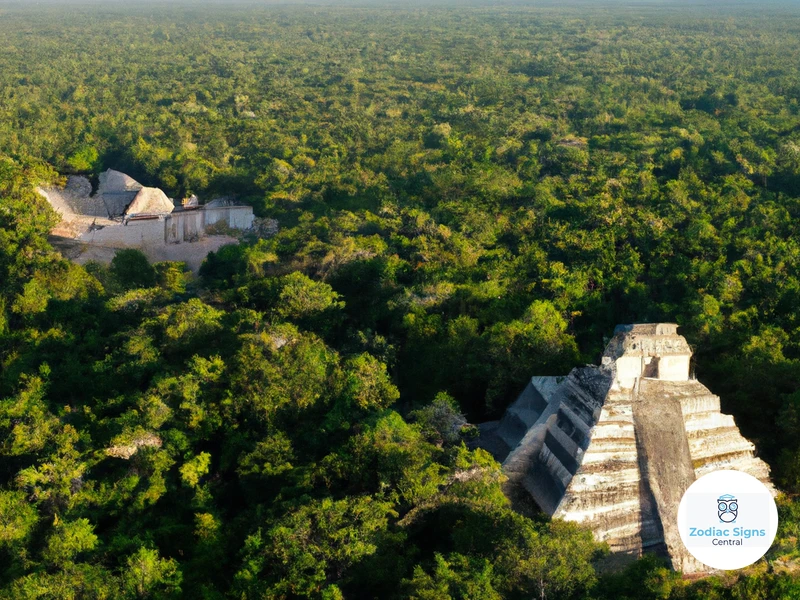
The Mayan civilization flourished in Mesoamerica, encompassing the present-day regions of Mexico, Guatemala, Belize, Honduras, and El Salvador. This ancient civilization, known for its remarkable achievements in architecture, mathematics, and astronomy, thrived from around 2000 BCE to 1500 CE. The Mayans constructed awe-inspiring cities, such as Chichen Itza, Tikal, and Palenque, displaying their architectural prowess and advanced urban planning. They developed a hieroglyphic writing system, which scholars have been able to decipher, offering valuable insights into their history. The Mayan culture was deeply rooted in cosmology, with their beliefs and practices revolving around the movements of celestial bodies and the cycles of time. This focus on the celestial realm led to the development of Mayan astrology, an intricate system that played a significant role in their society. Let us dive deeper into the fascinating world of the Mayans, understanding their historical background and exploring the cultural significance of their remarkable civilization.
1. Historical Background
The historical background of the Mayan civilization is a fascinating tapestry of cultural development and societal evolution. The Mayans emerged as an advanced civilization around 2000 BCE, originating in what is now known as southern Mexico and parts of Central America. They built thriving city-states, characterized by impressive architecture, intricate artwork, and well-organized societies. The Mayan civilization reached its peak during the Classic Period (250-900 CE), with cities like Tikal, Palenque, and Copán flourishing as vibrant centers of trade, politics, and religious practices. The Mayans were skilled astronomers and mathematicians, with their sophisticated understanding of celestial movements and the concept of time shaping their daily lives. They developed a complex calendar system that allowed them to track astronomical events and accurately predict celestial occurrences. Through their meticulous observations and calculations, the Mayans established a strong connection between the celestial realm and the earthly realm. This connection laid the groundwork for the development of Mayan astrology, a rich tradition that expanded upon their astronomical knowledge and became an integral part of Mayan culture. To truly appreciate Mayan astrology, it is essential to understand the historical context within which it took shape and evolved over centuries, intertwining with the complex social, political, and religious dynamics of one of the most extraordinary civilizations in human history.
2. Cultural Significance
Mayan astrology held immense cultural significance within the Mayan civilization. It was deeply intertwined with their religious and spiritual beliefs, shaping their understanding of the universe and their place in it. The Mayans saw the celestial bodies as divine entities, with each planet, star, and constellation representing a deity or a powerful force. This belief system led to the development of a complex cosmology that influenced every aspect of their culture, ranging from religious rituals to architectural designs. The Mayans believed that the positioning of celestial bodies at the time of a person’s birth could determine their personality traits, strengths, and weaknesses. Astrology played a vital role in decision-making processes, such as determining the best times to plant crops, conduct ceremonies, or engage in battles. It provided guidance and insight into important events and helped individuals align themselves with cosmic energies. Mayan astrology was not just a tool for divination but also a way to connect with the spiritual realm and seek harmony between humanity and the cosmos. Understanding the cultural significance of Mayan astrology is crucial for comprehending the holistic nature of this ancient civilization and how astrology permeated various aspects of their daily lives. To this day, the influence of Mayan astrology continues to fascinate and captivate individuals seeking a deeper understanding of themselves and their place in the world. For more information on understanding horoscope and improving emotional intelligence, click here.
Mayan Astrology
Mayan astrology, deeply rooted in the beliefs and practices of the ancient Mayan civilization, provides a fascinating glimpse into their understanding of the cosmos. One of the key elements of Mayan astrology is the Mayan Zodiac, which consists of 20 day signs representing different energies and characteristics. Each day sign, such as Imix (Crocodile), Ik (Wind), or Ben (Reed), carries its own symbolic meaning and influences individuals born under it. In addition to the Mayan Zodiac, the Mayans also developed the Long Count Calendar, a precise and complex system for tracking time. This calendar not only records dates but also provides insight into the spiritual and personality traits associated with specific periods. Mayan astrology incorporates the concept of Nahuals, which are animal spirits associated with each day sign. Understanding the interactions between the day signs and Nahuals allows for a more comprehensive interpretation of one’s birth chart. By decoding these various aspects, Mayan astrologers could unveil profound insights about an individual’s personality, destiny, and life path. To learn more about the fascinating world of astrology, you can explore how it can impact your emotional intelligence by understanding your horoscope or discover how astrological influences can shape workplace strengths and weaknesses at the workplace. Additionally, exploring the influence of Neptune in dreams and intuition can offer a deeper understanding of the subconscious mind at Neptune and the subconscious.
1. Mayan Zodiac
The Mayan Zodiac, also known as the Tzolkin, is a key component of Mayan astrology. It is a cycle of 260 days, with each day represented by a unique combination of a number between 1 and 13 and one of 20 different Day Signs. These Day Signs hold significant symbolism in Mayan culture and are thought to influence a person’s character and destiny. The 20 Day Signs in the Mayan Zodiac include names such as Imix (Crocodile), Ik (Wind), and Akbal (Night). Each Day Sign possesses distinct qualities and characteristics, providing insights into an individual’s strengths, weaknesses, and overall personality traits. The combination of a specific Day Sign with a number creates a unique energy that guides individuals throughout their lives. This intricate system of the Mayan Zodiac allows astrologers to analyze and interpret the cosmic influences on an individual’s journey, offering guidance and understanding. Whether you are a B’en (Reed), Kawoq (Earthquake), or another Day Sign, the Mayan Zodiac provides a rich tapestry of insight into your persona and life path.
| Number | Day Sign |
|---|---|
| 1 | Imix (Crocodile) |
| 2 | Ik (Wind) |
| 3 | Akbal (Night) |
2. Long Count Calendar
The Long Count Calendar was a fundamental aspect of Mayan astrology that held immense importance in their society. This unique calendar system allowed the Mayans to track and record the passage of time with astonishing accuracy. Unlike our modern Gregorian calendar, which measures time in years, months, weeks, and days, the Long Count Calendar operated on a grander scale. It was based on a complex numerical system that consisted of five units: the kin (one day), the uinal (20 kin or 20 days), the tun (18 uinal or 360 days), the katun (20 tun or 7,200 days), and the baktun (20 katun or 144,000 days). The Long Count Calendar had the capability to measure time for thousands of years into the future and past. Each baktun, equivalent to approximately 394 years, marked a significant milestone, and the Mayans celebrated the end of each baktun with great anticipation. It is worth noting that the Long Count Calendar gained international attention in recent years due to theories suggesting that it pointed to an apocalyptic event in December 2012, which was debunked as a misinterpretation. Nonetheless, the Long Count Calendar remains a remarkable testament to the Mayan’s mathematical prowess and their deep understanding of celestial cycles.
3. Nahuals and Day Signs
The Mayan astrological system heavily relied on the concept of “nahuals” and “day signs” to interpret and understand the influence of celestial forces on individuals. Nahuals, also known as “spirit animals,” represented different energies and attributes associated with each day in the Mayan calendar. These day signs were crucial in determining an individual’s personality traits, strengths, weaknesses, and destiny. There are a total of 20 day signs in the Mayan astrology system, each with its own unique characteristics and symbolism. These include powerful symbols such as Jaguar, Monkey, Eagle, and Snake, among others. Each day sign holds specific qualities and resonates with particular aspects of life, such as love, relationships, career, and health. By identifying their day sign, individuals could gain insights into their innate qualities and understand how they interacted with the world around them. This knowledge was passed down through generations, enabling individuals to align themselves with their respective day sign and harness its energy for personal growth and fulfillment. Understanding the significance of nahuals and day signs is essential to unraveling the secrets of Mayan astrology and gaining a deeper understanding of oneself and one’s place within the universe.
Decoding Mayan Horoscopes
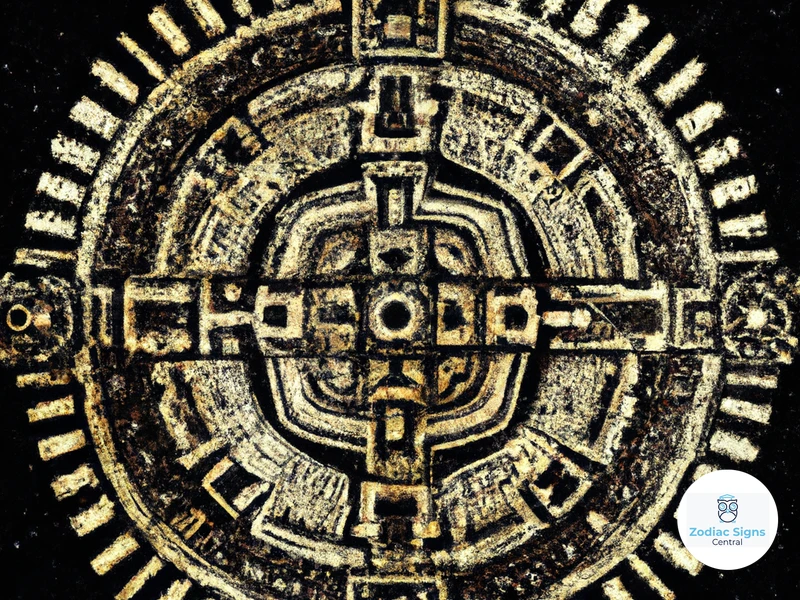
Decoding Mayan horoscopes involves a meticulous examination of birth charts and astrological houses, which serve as a guide to understanding an individual’s personality traits, strengths, and weaknesses. The Mayan astrologers believed that each person is assigned a specific nahual or day sign based on their birth date. These day signs, represented by unique glyphs and symbols, hold profound significance in deciphering one’s destiny and life path. The careful analysis of a person’s Mayan horoscope entails a deep exploration of hidden symbolism and interpretation behind these day signs. Each symbol carries its own attributes and qualities, shedding light on an individual’s character, purpose, and potential. By unraveling the secrets of Mayan horoscopes, individuals can gain valuable insights into their inner selves, fostering personal growth, and self-awareness.
1. Birth Charts and Astrological Houses
In Mayan astrology, birth charts and astrological houses play a crucial role in deciphering an individual’s personality traits, strengths, and challenges. Mayan birth charts are calculated based on a person’s birth date, taking into account the day, month, and year. These charts provide insights into different aspects of an individual’s life, such as their destiny, personal characteristics, and spiritual path.
The Mayans believed that each person is associated with a specific astrological house, which influences various aspects of their life. These houses are represented by sacred animals, such as the Jaguar, Rabbit, or Snake, which are associated with different qualities and energies. For example, someone born under the Jaguar house may possess qualities of leadership, strength, and determination, while those under the Rabbit house may be more compassionate, sensitive, and intuitive.
The birth chart also reveals the ruling elements and their influence on an individual’s personality. These elements, including Earth, Air, Fire, and Water, represent different energies and characteristics. For instance, individuals associated with the Fire element may be passionate, courageous, and driven, while those connected to the Water element might be intuitive, emotional, and adaptable.
Once the birth chart and astrological houses are determined, Mayan astrologers interpret the symbolism and patterns to provide insights into a person’s strengths, weaknesses, and life path. This analysis helps individuals gain a deeper understanding of themselves and their place in the world. By aligning their actions and decisions with their Mayan birth chart, individuals can harness their strengths and navigate challenges with greater clarity and purpose.
Understanding the intricacies of birth charts and astrological houses in Mayan astrology allows individuals to explore their true potential and gain a unique perspective on their life’s journey. It provides a roadmap to self-discovery and personal growth, empowering individuals to make informed choices and live a more fulfilled life.
2. Mayan Horoscope Compatibility
Mayan Horoscope Compatibility is an intriguing aspect of Mayan astrology that focuses on understanding the compatibility between individuals based on their Day Signs or Nahuals. In Mayan astrology, each person is associated with a specific Day Sign, which represents their personality traits and characteristics. By studying the interaction between different Day Signs, Mayan astrologers can determine the compatibility between individuals and provide insights into their potential strengths and challenges in relationships.
To assess Mayan horoscope compatibility, astrologers analyze the combination of Day Signs of two individuals. They consider factors such as the element and energy associated with each Day Sign, as well as the compatibility of their individual personalities and goals. Some combinations may result in harmonious relationships where both individuals complement each other’s strengths, while others may face challenges or conflicts due to contrasting traits.
For example, if one person has the Day Sign representing the sun, which symbolizes leadership and charisma, and another person has the Day Sign associated with the moon, which signifies sensitivity and intuition, their compatibility might be based on balancing these opposing energies. It’s believed that understanding the dynamics between Day Signs can help individuals navigate their relationships, promoting mutual understanding, and fostering harmonious connections.
It’s important to note that Mayan horoscope compatibility is just one aspect of assessing relationships and should be taken as a guiding tool rather than a definitive measure of compatibility. Every individual is unique, and factors such as personal growth, communication, and shared values also play significant roles in the success of a relationship.
Mayan horoscope compatibility provides a glimpse into the potential dynamics between individuals based on their Day Signs. It offers valuable insights into how personalities might interact and guides individuals in harnessing their strengths and understanding their differences for a more fulfilling and harmonious relationship.
3. Hidden Symbolism and Interpretation
Mayan astrology goes beyond the surface-level meanings of celestial movements and birth charts. It delves into the realm of hidden symbolism and intricate interpretations, making it a fascinating area of study. Ancient Mayan astrologers believed that each individual possessed a unique combination of energies and characteristics, influenced by the cosmic forces at the moment of their birth.
To decipher these hidden meanings, Mayan astrologers looked beyond the date of birth and analyzed the corresponding day sign, or “Nahual,” and its associated symbolism. The Nahuals represented various aspects of life and nature, such as animals, natural elements, and celestial objects. Each Nahual had specific qualities and traits attributed to it, which were used to provide insights into an individual’s personality, strengths, weaknesses, and destiny.
Mayan astrologers considered the position of celestial bodies within the astrological houses, which represented different areas of life, such as love, career, and health. The combination of Nahuals and astrological houses offered a comprehensive understanding of an individual’s life journey and purpose.
Interpreting Mayan horoscopes required expertise, intuition, and a deep understanding of the ancient Mayan symbolism. Mayan astrologers would examine the intricate details of an individual’s birth chart, analyzing the interactions between day signs, astrological houses, and the influences of planetary alignments. By decoding these symbols and patterns, astrologers could unlock the potential, challenges, and hidden aspects of an individual’s life.
It is important to note that Mayan astrology interpretations were not fixed or deterministic. Instead, they offered guidance and insights into one’s potential path, giving individuals a better understanding of themselves and the world around them. Mayan astrology emphasized personal growth, self-awareness, and the navigation of life’s challenges through the wisdom of the cosmos.
Understanding the hidden symbolism and interpretation in Mayan astrology allows us to appreciate the depth and complexity of this ancient practice. It highlights the unique perspective that the Mayan civilization had in their exploration of the cosmos and the human experience.
The Influence of Mayan Astrology Today
The influence of Mayan astrology continues to resonate in the modern world, captivating individuals seeking personal growth and a deeper understanding of their lives. Despite the decline of the Mayan civilization, the wisdom and knowledge of their astrologers are still cherished today. Mayan astrology has gained global popularity, with enthusiasts from all walks of life embracing its teachings. People turn to Mayan astrology for guidance in various aspects of their lives, be it relationships, career choices, or personal development. By exploring their birth charts and astrological houses, individuals can gain insights into their strengths, weaknesses, and potential life paths. Mayan astrology also offers compatibility assessments, helping people navigate their relationships and find harmony with others. Mayan astrology is revered for its hidden symbolism and interpretation, providing a profound understanding of individual traits and life events. The predictions made through this ancient practice continue to inspire and guide individuals on their journey towards self-discovery and personal fulfillment.
1. Popularity and Global Reach
Mayan astrology has gained significant popularity and has reached a global audience in recent years. With the rise of alternative spiritual practices and the growing interest in ancient wisdom, people from all corners of the world have turned to Mayan astrology for guidance and self-discovery. Online platforms and social media have played a crucial role in the dissemination of Mayan astrological knowledge, making it accessible to a wider audience. More and more individuals are seeking to understand their cosmic blueprint through Mayan astrology, as it offers a unique perspective on personality traits, life path, and relationships. The global reach of Mayan astrology can be seen in the numerous websites, books, and professional astrologers devoted to its practice and interpretation. Additionally, the popularity of Mayan astrology has led to the organization of workshops, seminars, and retreats where enthusiasts gather to deepen their understanding of this ancient system. This widespread appeal demonstrates the enduring fascination and relevance of Mayan astrology in the modern world.
2. Mayan Astrology for Personal Growth
Mayan astrology offers a unique perspective on personal growth and self-discovery. By studying the Mayan horoscope, individuals can gain valuable insights into their strengths, weaknesses, and inner potential. The Mayan astrological system is based on the belief that each person is born with a specific nahual or day sign, which influences their personality traits and life path. These day signs, ranging from Imix to Ajaw, are associated with different elements, animals, and energies. Understanding one’s day sign can provide guidance on how to harness one’s strengths and navigate life’s challenges. Additionally, Mayan astrology emphasizes the concept of balance and harmony, encouraging individuals to align their actions with the natural cycles and energies of the universe. By cultivating a deeper understanding of their day sign and the Mayan astrological houses, individuals can embark on a journey of self-discovery and personal growth. Through introspection and introspection, the insights gained from Mayan astrology can help individuals make informed decisions, develop their strengths, and unlock their true potential. It is a powerful tool for self-reflection and self-improvement, empowering individuals to lead more fulfilling and purposeful lives. To learn more about the role of astrology in personal growth, you can read our article on Astrology and Its Influence in the Workplace.
3. Mayan Astrological Predictions
Mayan Astrological predictions were an integral part of Mayan astrology, offering insights into the future and guiding individuals in various aspects of their lives. The Mayans believed that celestial bodies and their movements held immense power and influence over human existence. By studying the positions of these celestial entities, Mayan astrologers could make predictions about specific events and outcomes.
One of the primary tools used for Mayan Astrological predictions was the Long Count Calendar, a complex system that measured time in cycles. This calendar provided a framework to track significant celestial events, such as solar eclipses or planetary alignments, which were believed to have a profound impact on earthly affairs. By correlating these celestial occurrences with historical data, Mayan astrologers could make predictions about future events.
Additionally, Mayan astrologers relied on the interpretation of day signs and nahuals to make predictions. Each day in the Mayan calendar was associated with a specific nahual, a spiritual essence or energy, and a day sign, which represented certain characteristics and influences. By analyzing the combination of day signs and nahuals in a particular horoscope, Mayan astrologers could predict potential outcomes and provide guidance on various aspects of one’s life, such as relationships, health, and career.
However, it is essential to note that Mayan astrological predictions were not predetermined or fixed. Instead, they offered potential scenarios and insights into the energies present at a given moment. Mayan astrologers understood that individuals had the power to shape their own destinies through their choices and actions. Mayan astrological predictions served as a tool for self-reflection and decision-making rather than a fixed blueprint of the future.
Despite the passage of centuries, Mayan astrological predictions continue to intrigue and captivate people today. Many individuals seek guidance and insight by consulting Mayan astrology for personal growth, understanding their strengths and weaknesses, and making informed choices for their lives. The ancient wisdom of the Mayan astrologers is a testament to the enduring power and relevance of their astrological practices. So, whether you are curious about what the cosmos has in store for you or simply seeking a deeper understanding of yourself, exploring Mayan astrological predictions can provide valuable insights and guidance along your journey.
Conclusion
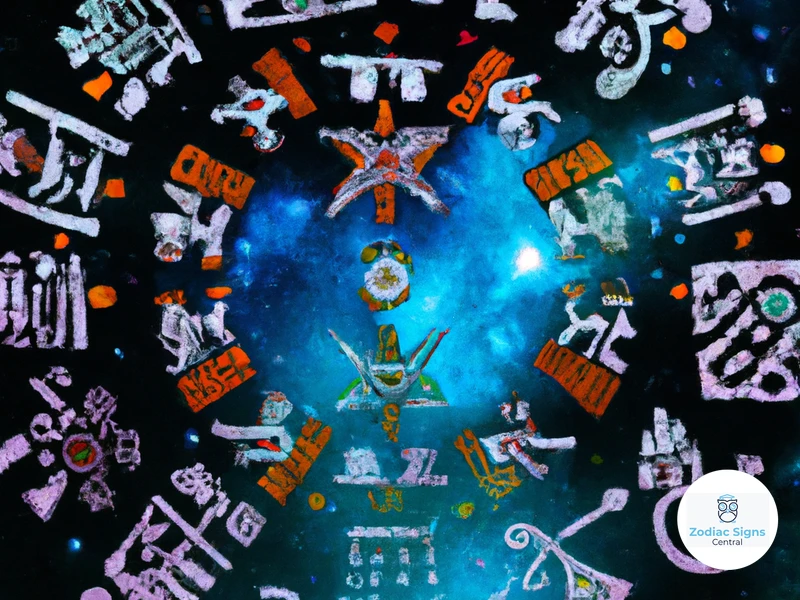
In conclusion, delving into the secrets of ancient Mayan astrologers has provided us with a fascinating glimpse into their advanced knowledge and intricate practices. The Mayan civilization, with its rich history and cultural significance, has left an indelible mark on our understanding of astrology and its connection to human lives. From the Mayan Zodiac to the decoding of horoscopes and the hidden symbolism embedded within, we have uncovered a world of celestial wisdom that continues to captivate and intrigue us today. Mayan astrology, with its emphasis on personal growth, compatibility, and the exploration of hidden meanings, offers individuals a unique perspective on their lives and a deeper understanding of themselves. As we reflect on the influence of Mayan astrology in the modern world, we see its popularity and global reach, with enthusiasts embracing this ancient wisdom to gain insights into their personal journeys. While Mayan astrological predictions may not always be precise, they serve as a guiding light, encouraging us to explore our potential and navigate life’s challenges. As we acknowledge the legacy of the Mayans and their profound contributions to astrology, we are reminded of the eternal connection between the cosmos and the human spirit. Mayan astrology continues to inspire us, inviting us to uncover the secrets of the universe and embark on a journey of self-discovery. Whether we seek personal growth, emotional intelligence, or a deeper understanding of our place in the world, exploring the mysteries of ancient Mayan astrologers can enrich our lives and broaden our horizons.
Frequently Asked Questions
1. How did the Mayan civilization come into existence?
The Mayan civilization emerged around 2000 BCE in Mesoamerica, a region encompassing present-day Mexico and Central America. It began as agricultural communities and gradually evolved into more complex societies with the development of cities, trade networks, and a structured social hierarchy.
2. What were the main achievements of the Mayans?
The Mayans made significant contributions in various fields. They excelled in astronomy, mathematics, architecture, and art. They developed a complex calendar system, built impressive cities and temples, and created intricate hieroglyphic writing. Their art showcased intricate designs, depicting their religious beliefs, rituals, and daily life.
3. What was the significance of astronomy in Mayan culture?
Astronomy held great importance in Mayan culture. They believed that celestial bodies influenced human lives and events on Earth. By observing the movements of the sun, moon, and planets, the Mayans developed a sophisticated calendar system to track time, predict celestial events, and guide their religious and agricultural practices.
4. What is the Mayan Zodiac?
The Mayan Zodiac, also known as the Tzolkin, is a system that assigns specific animal and deity symbols to each day of the calendar. These symbols are believed to influence an individual’s personality traits and destiny. The Mayan Zodiac is used in conjunction with other astrological elements to provide insights into a person’s character.
5. What is the significance of the Long Count Calendar?
The Mayans used the Long Count Calendar to measure and record long periods of time. It is a complex system that counts days, months, years, and cycles. The Long Count Calendar played a significant role in Mayan prophecies and the prediction of important events in their society.
6. What are Nahuals and Day Signs in Mayan astrology?
In Mayan astrology, Nahuals refer to animal spirits or energies associated with specific days in the calendar. Each day has its own Day Sign and Nahual, which together provide insights into an individual’s character, strengths, and weaknesses. These Nahuals and Day Signs are used to create personal birth charts and horoscopes.
7. How are birth charts and astrological houses used in Mayan horoscopes?
Mayan birth charts, also known as natal charts, are based on a person’s date of birth and assigned Nahual and Day Sign. Astrological houses in Mayan horoscopes represent specific areas of life, such as career, relationships, and health. The position of planets and celestial bodies within these houses provides further insights into an individual’s personality traits and life experiences.
8. Can Mayan astrology determine compatibility between individuals?
Yes, Mayan astrology can determine compatibility between individuals. By comparing their Day Signs and Nahuals, astrologers can assess the potential harmony or challenges in a relationship. Understanding the unique energies of each person can help identify areas of compatibility and areas that may require compromise and understanding.
9. Are there hidden symbolism and interpretation in Mayan horoscopes?
Yes, Mayan horoscopes contain hidden symbolism and require interpretation. The placement of specific symbols within birth charts can indicate strengths, weaknesses, and potential life paths. Mayan astrologers possess deep knowledge and expertise in decoding these symbols, providing valuable insights and guidance to individuals seeking a deeper understanding of themselves and their life’s purpose.
10. How is Mayan astrology relevant in modern times?
Mayan astrology has gained popularity worldwide, offering a unique perspective on personality traits, compatibility, and life predictions. Many individuals find value in reflecting on their Mayan horoscopes for personal growth and self-discovery. Additionally, Mayan astrologers continue to make predictions about upcoming events and offer guidance based on the ancient wisdom of their civilization.
References
Frequently Asked Questions
1. What is the significance of the Mayan civilization in history?
The Mayan civilization was one of the most advanced ancient civilizations, known for their achievements in architecture, mathematics, astronomy, and art. They left behind an intricate calendar system and stunning ruins that continue to fascinate archaeologists and historians.
2. How did Mayan astrology differ from Western astrology?
Mayan astrology had its unique system, focusing on the energies associated with their zodiac signs and the influence of the Long Count Calendar. It placed great importance on the day of birth and the symbolism of various celestial entities, offering a distinct perspective compared to Western astrology.
3. What is the Mayan Zodiac?
The Mayan Zodiac consists of 19 different signs, known as “day signs.” Each day sign has its meaning and represents specific personality traits and characteristics. It provides a framework for understanding an individual’s strengths, weaknesses, and life path.
4. How does the Long Count Calendar work?
The Long Count Calendar is a system developed by the ancient Mayans to measure time. It consists of cycles of different lengths, with the longest cycle known as a b’ak’tun. This calendar allowed Mayan astrologers to determine auspicious dates, predict significant events, and interpret the shifts in cosmic energies.
5. What are Nahuals and Day Signs in Mayan astrology?
Nahuals are the spirit animals associated with each day sign in the Mayan astrology system. They represent the guiding forces or energies of a person’s life. Day signs, on the other hand, are the 19 different signs that define the personality traits and life path of an individual based on their birth date.
6. How are birth charts and astrological houses used in Mayan astrology?
In Mayan astrology, birth charts help determine an individual’s personality, strengths, and weaknesses based on the alignment of celestial bodies at the time of birth. Astrological houses, similar to Western astrology, divide a person’s life into different areas or aspects, providing insights into various aspects of one’s life, such as career, relationships, and spirituality.
7. Can Mayan astrology determine compatibility between individuals?
Yes, Mayan astrology can offer insights into the compatibility between individuals. By comparing the day signs and Nahuals of two individuals, astrologers can assess the harmony and challenges that may exist in a relationship. This knowledge can help individuals navigate their relationships more effectively.
8. What is the hidden symbolism in Mayan horoscopes?
Mayan horoscopes are filled with hidden symbolism that astrologers analyze to provide meaningful insights. From the combinations of day signs to the alignment of celestial bodies, each element holds symbolic meaning, offering a deeper understanding of an individual’s life purpose, challenges, and opportunities.
9. How popular is Mayan astrology in the modern world?
Mayan astrology has gained popularity globally, especially among individuals seeking alternative perspectives on astrology. Many people are drawn to the rich symbolism, unique interpretations, and the opportunity to discover hidden aspects of their personality and life path.
10. Can Mayan astrology predict future events?
While Mayan astrology can provide insights into cosmic energies and ancient wisdom, it is important to note that it does not offer precise predictions like certain forms of astrology claim to. Instead, Mayan astrology focuses on understanding the cyclical patterns of life and the energies that influence them, empowering individuals to make informed decisions and navigate their future with awareness.
References
- Unveiling The Mystics: Your Guide To Mayan Astrology …
- Mysteries of the Mayans: Unveiling the Secrets of a Lost …
- Book of Destiny by Carlos Barrios – Ebook
